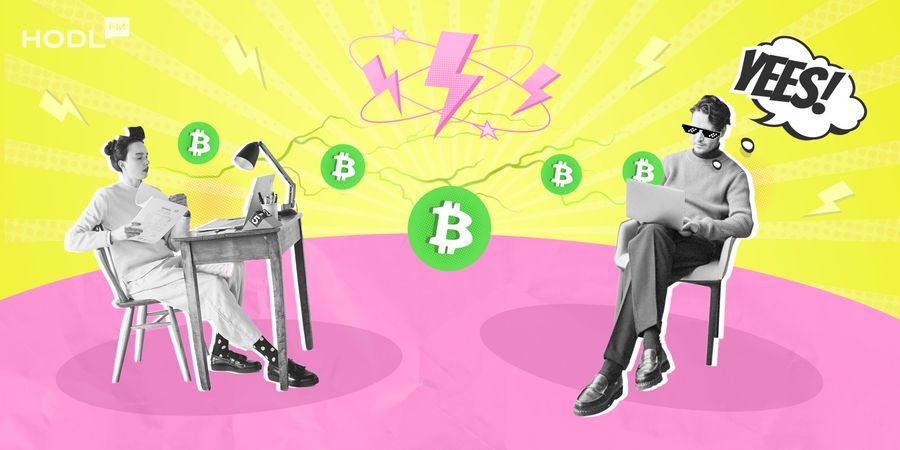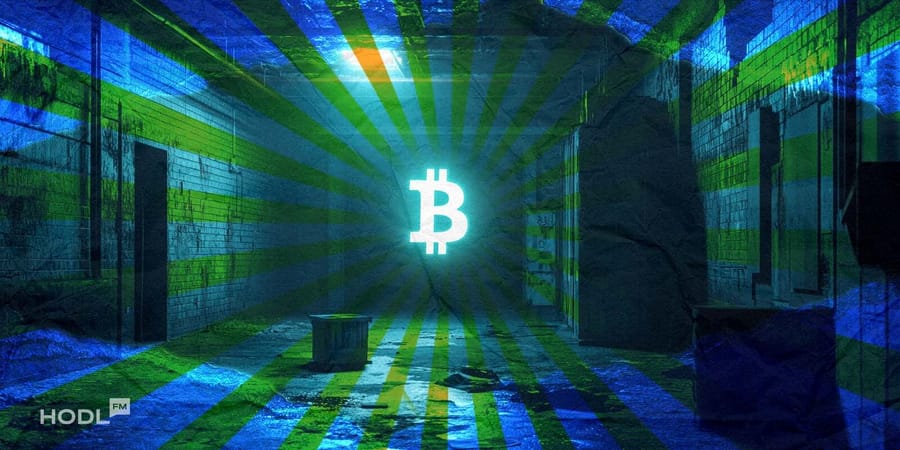Making multiple transactions such as buying coffee, making online orders, or paying rent is costly in the long run. But what if the costs were reduced to next to nothing? This is the vision Bitcoin SV (BSV) has for the future of digital currency. BSV aims to make Bitcoin closer to what Satoshi Nakamoto originally envisioned; fast, and affordable transactions around the globe.
The Bitcoin Lightning Network was created to make BTC transactions faster and cheaper. However, it has experienced ups and downs in both usage and interest. While many still see it as the solution for Bitcoin's scalability, others wonder if it’s reaching its potential or being overshadowed by newer technologies.
Introduction to BTC Lightning Network
The Lightning Network is a “layer-2” system, meaning it’s an additional layer built on top of the main Bitcoin blockchain. This layer reduces congestion by allowing transactions to happen off the main blockchain and recording the most important details back onto it.
To exemplify how this happens, imagine the main Bitcoin blockchain as a busy highway. If every small transaction had to use this highway, traffic would get backed up, leading to long delays and high toll fees. The Lightning Network acts like a local road that lets people travel between nearby towns without clogging the highway. When they reach their final destination, only the total distance traveled gets added to the highway records, keeping traffic moving smoothly.
Bitcoin Scalability Solutions
While Bitcoin is secure and decentralized, it’s limited in how many transactions it can process each second. Transactions often take several minutes or even hours, and fees can be too high for small transactions. As new blockchains emerged such as Ethereum with 30 transactions per second (TPS) and Solana with 65,000 TPS, Bitcoin had to find ways to stay competitive. The Lightning Network provides a way for Bitcoin to process transactions much faster and with lower fees.
The idea behind the Lightning Network was inspired by Bitcoin’s creator, Satoshi Nakamoto, who hinted at ways to make transactions faster. In 2015, developers Joseph Poon and Tadge Dryja took up the challenge of solving Bitcoin’s scalability issues. They developed the concept of “payment channels” and published a white paper in 2016.
Over time, the Lightning Network gained support from tech leaders, including Twitter’s Jack Dorsey, who explored its potential to allow Bitcoin payments on the social media platform.
Only a matter of time
— jack (@jack) June 11, 2021
Bitcoin Transaction Speed
At the core of the Lightning Network are “payment channels,” which allow two parties to transact directly without using the main Bitcoin blockchain until they’re ready to close the channel. This concept can be compared to setting up a digital tab with someone, where all small transactions are tracked between the two parties. When they’re done, they record a single final transaction on the Bitcoin blockchain. This is how it happens:
- Opening a Payment Channel: A user locks a certain amount of Bitcoin into the network, which creates a channel. This locked amount is used for transactions.
- Transacting Off-Chain: Both parties can make unlimited transactions within this channel, which are nearly instant and free.
- Closing the Channel: When the channel is closed, all transactions are summarized into one, and only this total is recorded on the Bitcoin blockchain. This saves time and reduces fees, as only one transaction is processed instead of many.
Benefits of the Lightning Network
The Lightning Network brings several major benefits to Bitcoin users, enhancing its utility in real-world situations.
- Speed: Transactions are nearly instant because they happen off-chain and don’t need to wait for confirmation from multiple nodes.
- Lower Costs: By avoiding the main blockchain for each transaction, fees remain low, making it viable for microtransactions like buying a cup of coffee.
- Micropayments: The Lightning Network allows for very small payments, something not possible on the main Bitcoin blockchain.
- Lower Energy Consumption: Since transactions happen off-chain, the energy required for each transaction is lower, which addresses environmental concerns associated with Bitcoin.
Current Challenges and Regulatory Issues Faced by the Lightning Network
Despite its advantages, the Lightning Network isn’t perfect. Some challenges and risks include:
- Cost of Setting up Channels: Moving funds onto the Lightning Network and opening channels can be costly and may deter some users.
- Counterparty Risks: If a user goes offline, their funds could get stuck, or a dishonest counterparty could close the channel without notice. Lightning service providers and “watchtowers” are working to mitigate these issues, but the risk remains.
- Limited Scalability: Each payment channel is limited to two parties. For businesses needing to transact with multiple customers, managing multiple channels can become complex and increase counterparty risks.
If a small business wants to accept Bitcoin payments from hundreds of customers, it would need to open separate channels for each one, which could lead to high setup costs and complicated management.
Analysis of the User Experience and Complexity of Lightning Network Transactions
The Lightning Network is already being used for various real-world applications. Here are some popular examples:
- International Remittances: Many people use the Lightning Network to send money across borders, avoiding high fees and delays typical with traditional methods.
- Retail and Food Services: Some cafes and online retailers have started accepting Lightning payments for small purchases due to the network’s low fees and fast transaction times.
- Social Media and Content Platforms: Twitter is one example where the Lightning Network could facilitate tipping, allowing users to support creators with small Bitcoin payments.
Comparison with BSV’s Approach to Scaling and Satoshi Nakamoto’s Original Vision
Bitcoin SV (BSV) takes a different approach to scaling compared to Bitcoin. It increases the size of each block on its blockchain instead of using an additional layer like the Lightning Network. Bigger blocks allow more transactions to happen directly on the blockchain, which is what Satoshi Nakamoto had in mind. In Satoshi's Bitcoin white paper, Bitcoin was described as a "peer-to-peer electronic cash system" meant to support quick, affordable transactions around the world.
By using larger blocks, BSV aims to keep transactions fast and fees low without relying on extra layers. However, some critics think that allowing very large blocks could make the network more centralized, as only a few large entities might be able to store and process all the data. In contrast, Bitcoin (BTC) uses the Lightning Network to handle small transactions off the main blockchain, keeping the core network smaller and more decentralized.
Unlike Bitcoin’s (BTC) approach, which relies on additional layers like the Lightning Network to handle small transactions off-chain, BSV’s strategy keeps everything on the blockchain, aiming for simplicity and speed.
Comment
by u/MotoX9928 from discussion
in bsv
As exemplified by the Reddit user, while BSV promises low fees and quick processing, it sparks debates around network centralization and data security.
Potential Future of the Lightning Network given Increasing Regulatory Scrutiny
The Lightning Network continues to grow, with thousands of nodes and millions of dollars in Bitcoin locked in its channels. Support from major players such as crypto exchanges and financial services indicate that the Lightning Network will become an essential part of the Bitcoin ecosystem.
A notable recent development is the support from major wallets like Breez and Wallet of Satoshi, which allow users to easily set up and manage Lightning channels. This support is making it more accessible for the average user and paving the way for Lightning Network adoption in daily financial transactions.
We're excited to announce the next stage in the expansion of the Breez SDK: the @Liquid_BTC implementation 💧⚡️
— Breez ⚡ (@Breez_Tech) July 22, 2024
A nodeless Lightning integration offering developers one of the simplest ways to integrate Bitcoin payments into any app.
⚡️💧🚀https://t.co/mHGKKI2a3i
Take Away
The Bitcoin Lightning Network is a transformative technology that addresses Bitcoin’s scalability issues by enabling fast, affordable transactions. Though it has some challenges, it also has benefits such as low costs, instant payments, and the potential for micropayments. This makes it ideal for real-world applications. As adoption grows and developers continue to innovate, the Lightning Network could be the key to making Bitcoin a viable option for everyday transactions and emphasizing its role as a global currency.

Disclaimer: All materials on this site are for informational purposes only. None of the material should be interpreted as investment advice. Please note that despite the nature of much of the material created and hosted on this website, HODL FM is not a financial reference resource and the opinions of authors and other contributors are their own and should not be taken as financial advice. If you require advice of this sort, HODL FM strongly recommends contacting a qualified industry professional.





